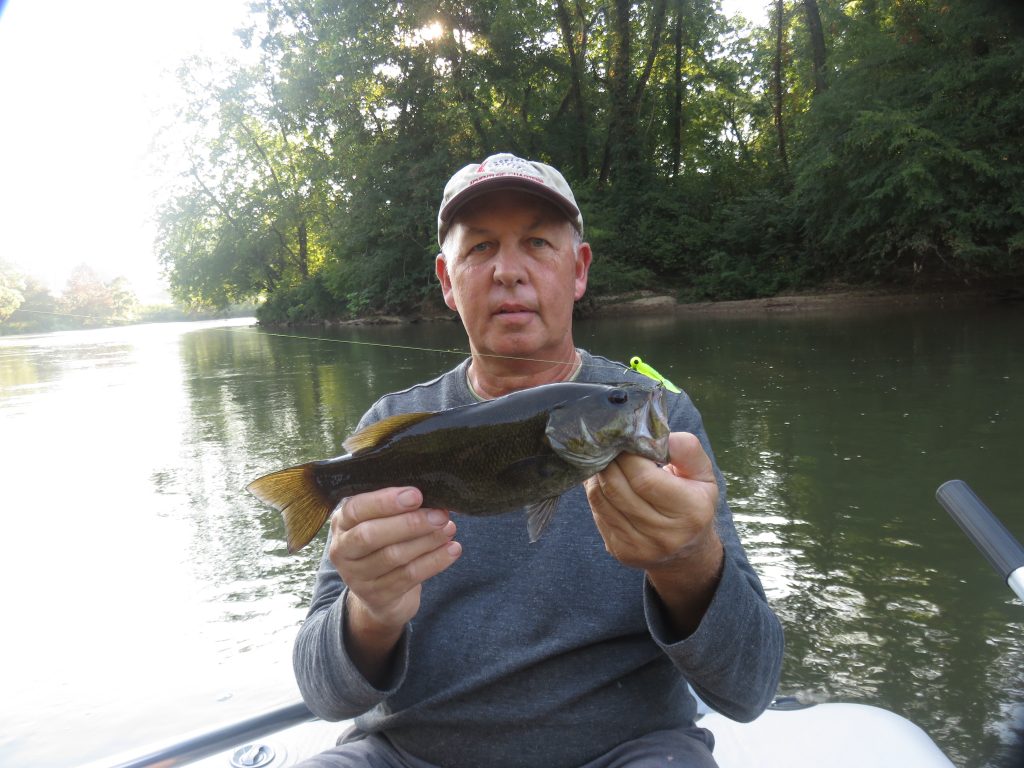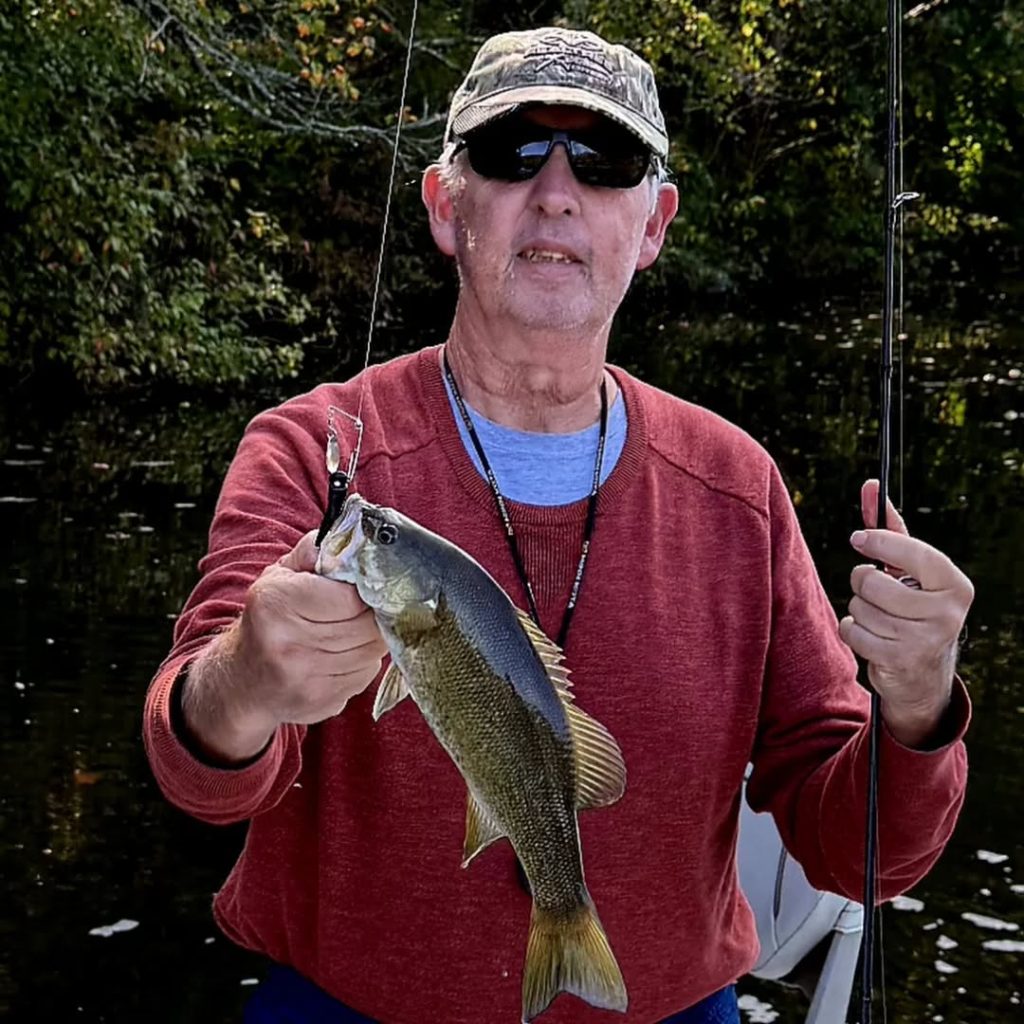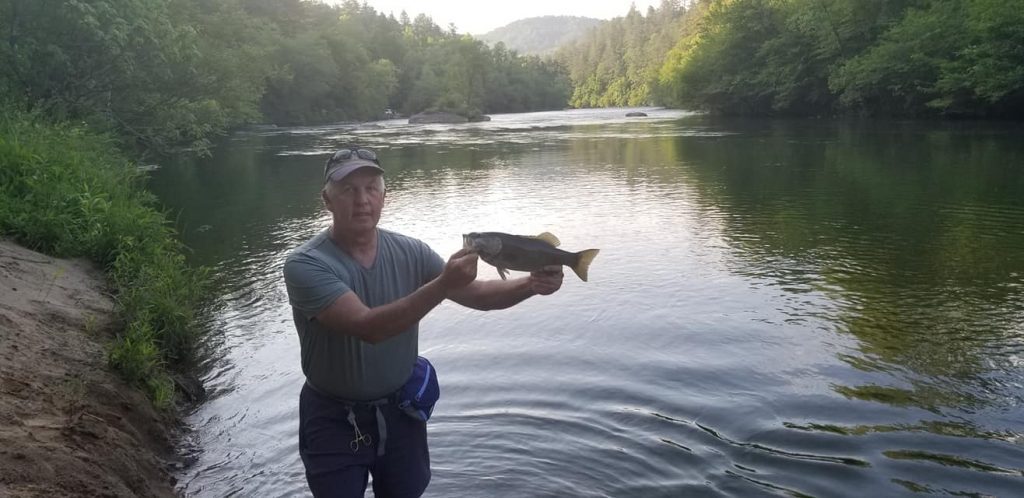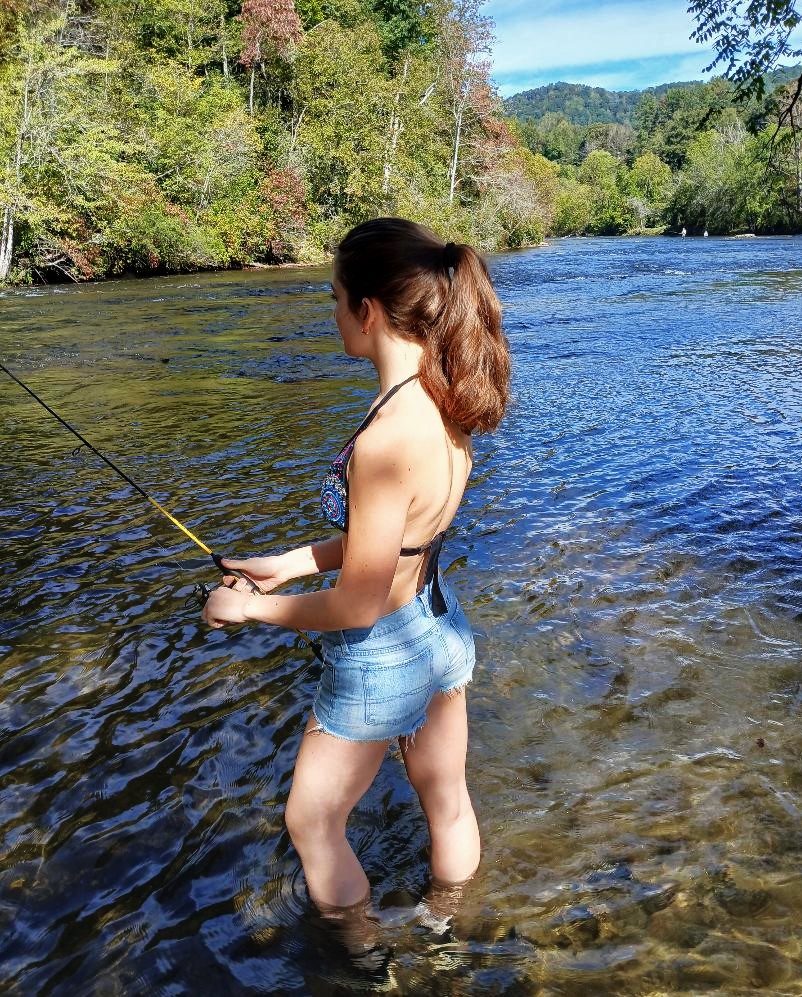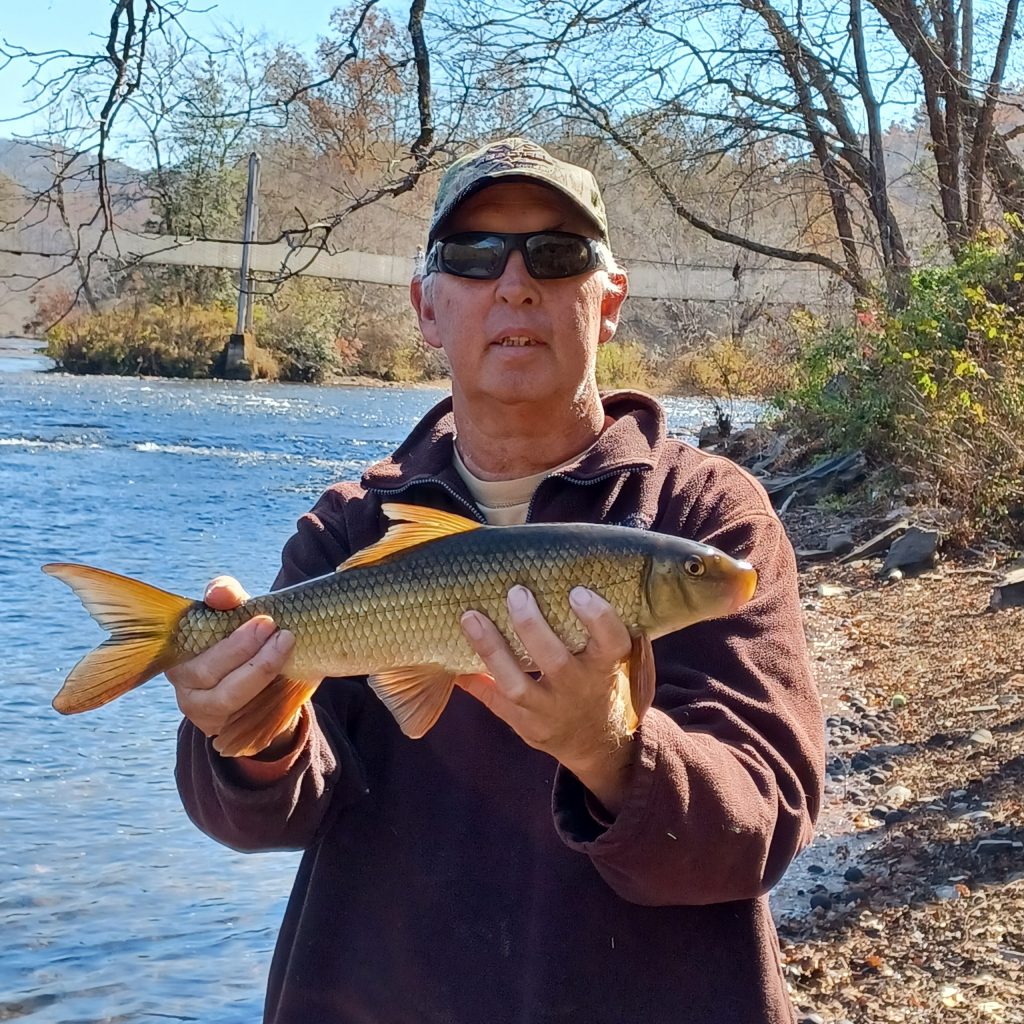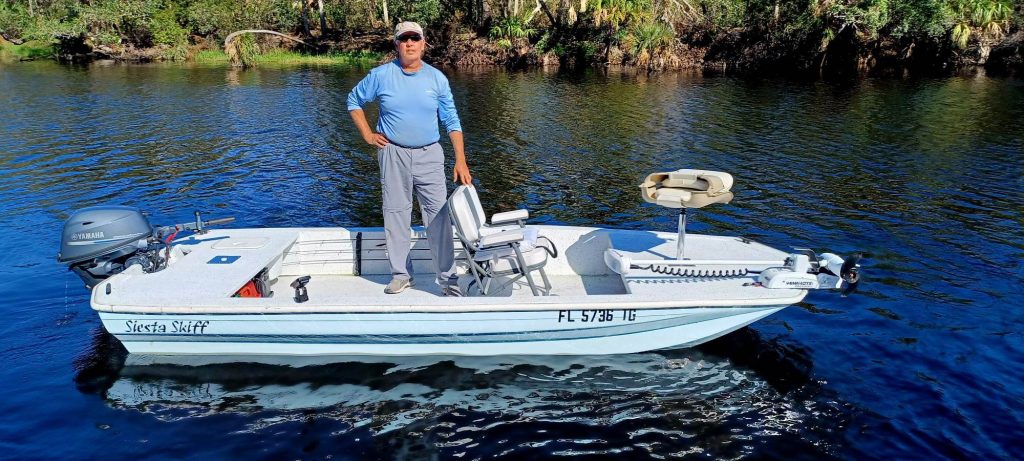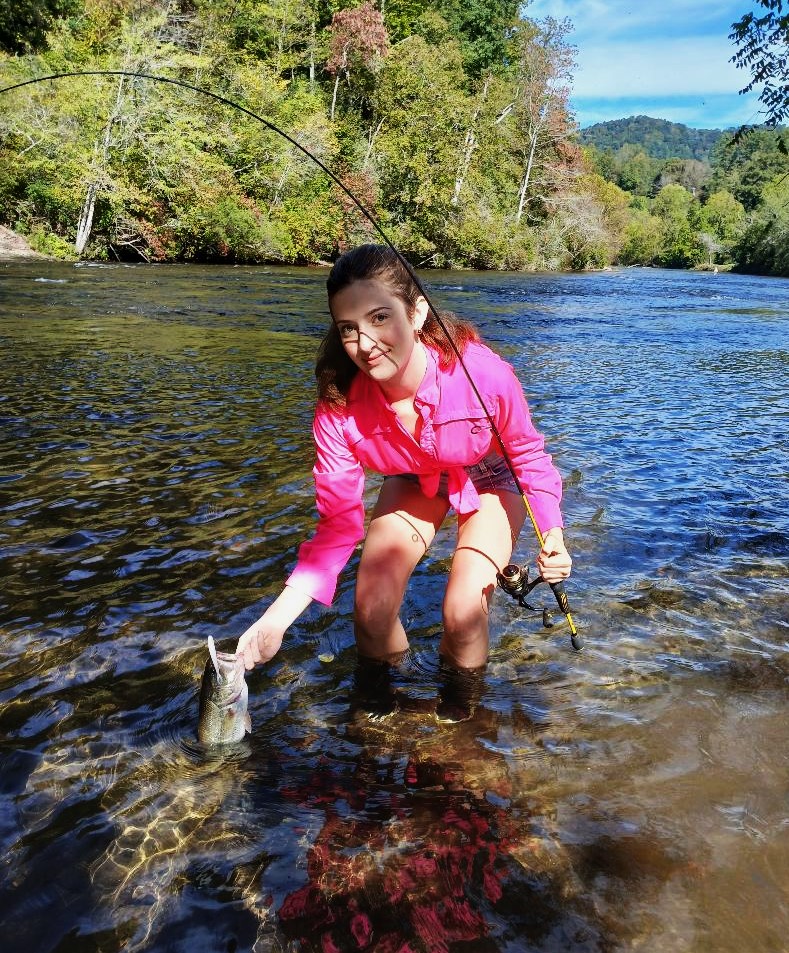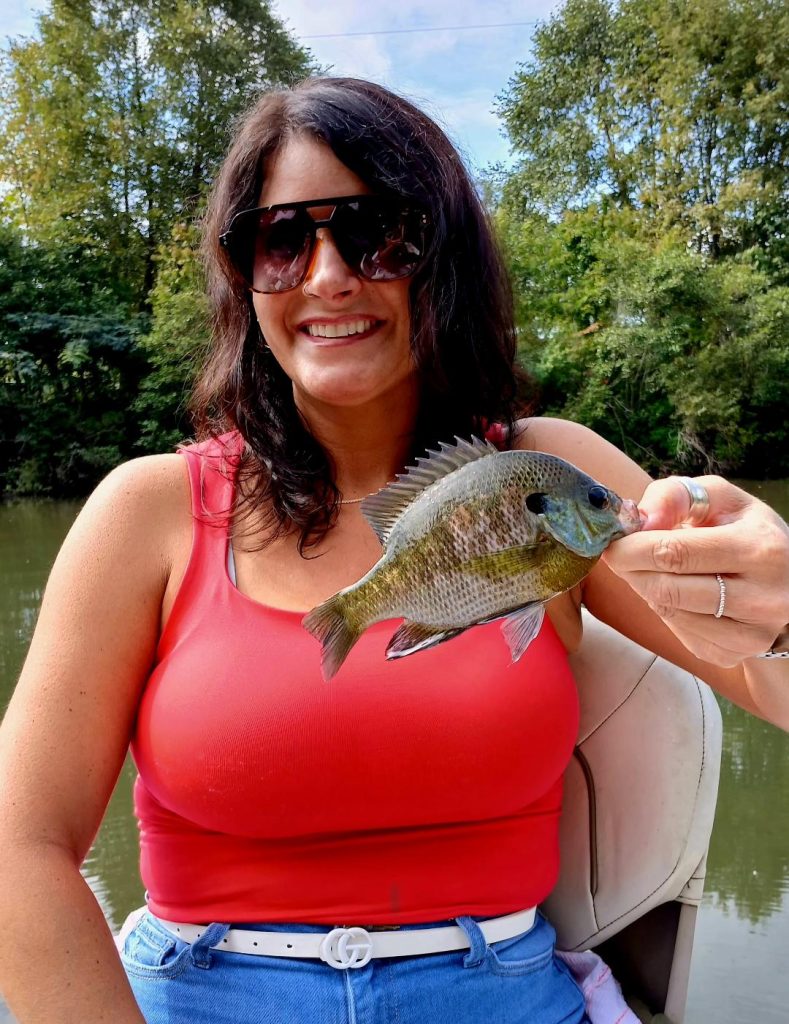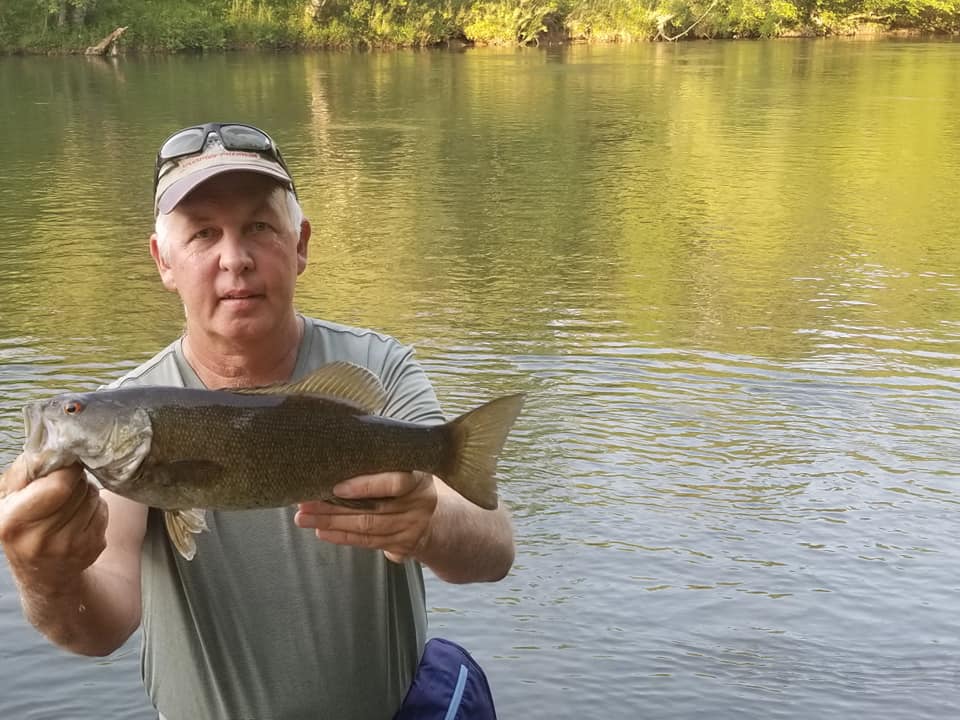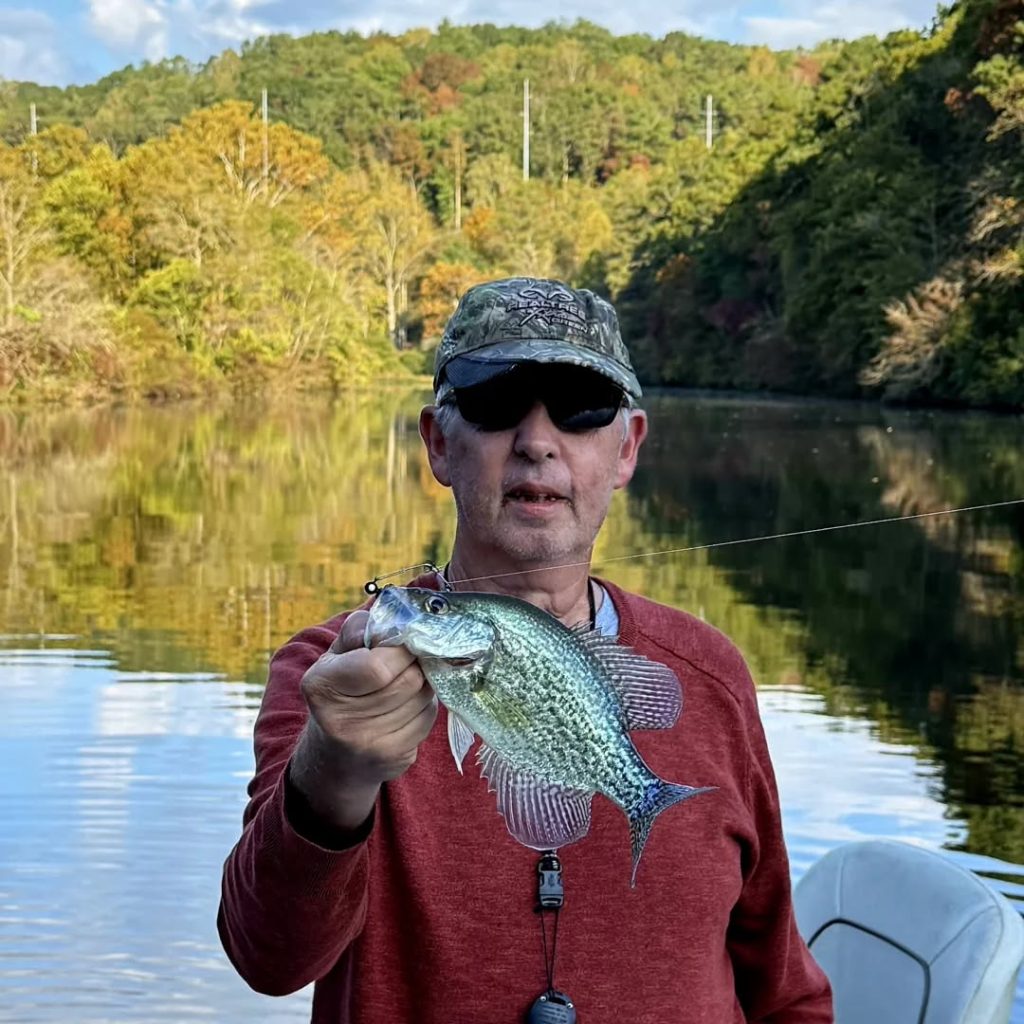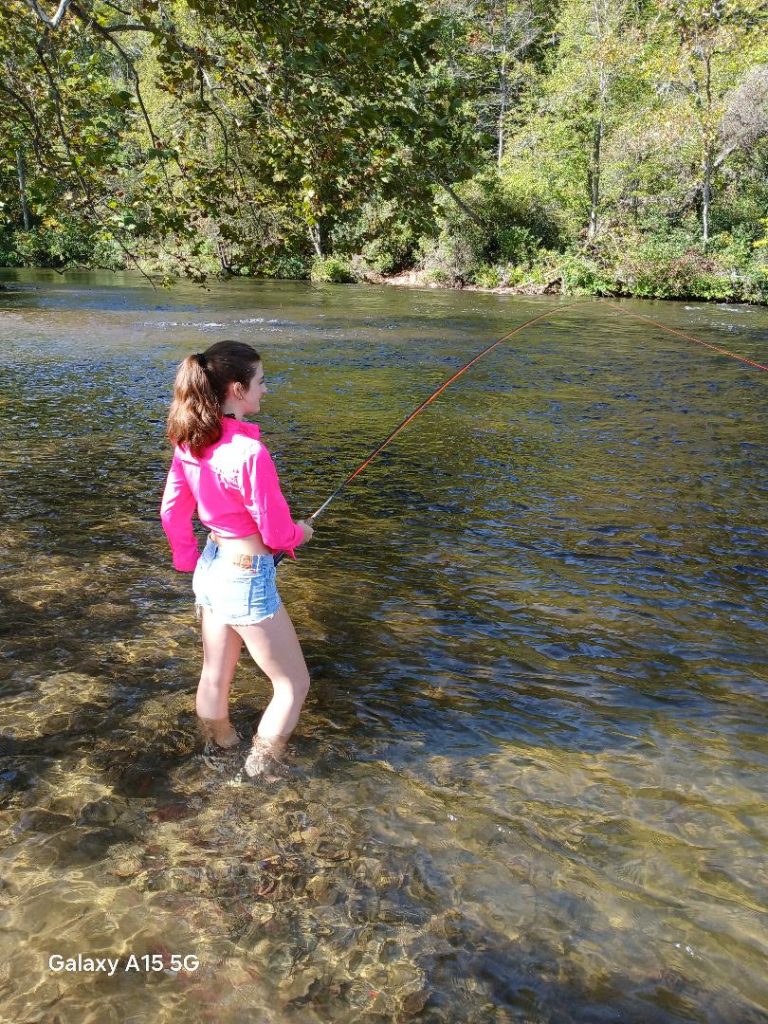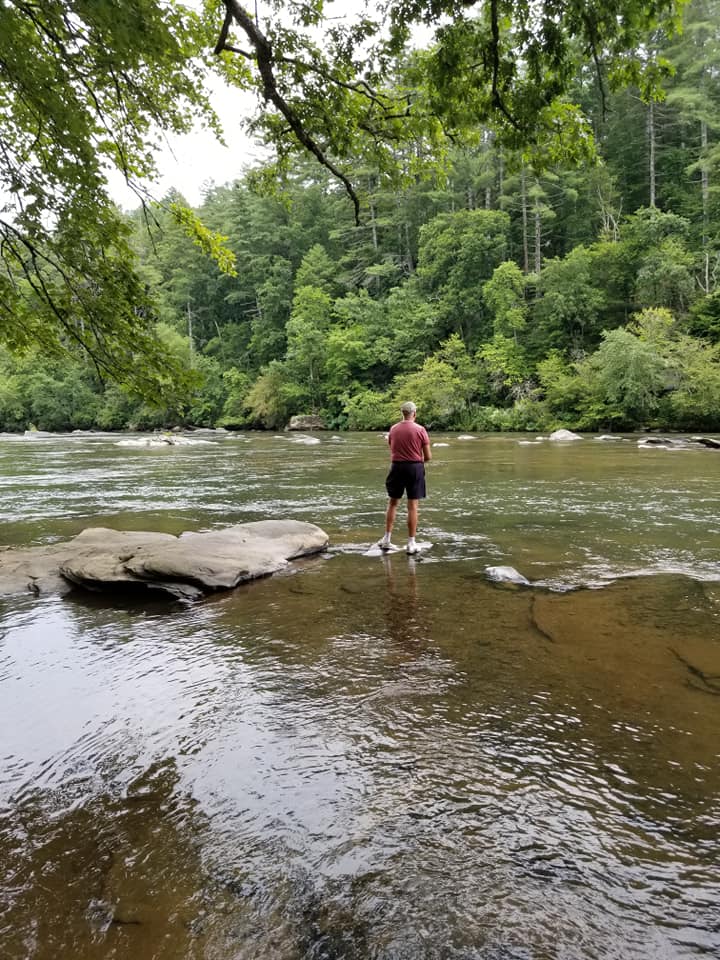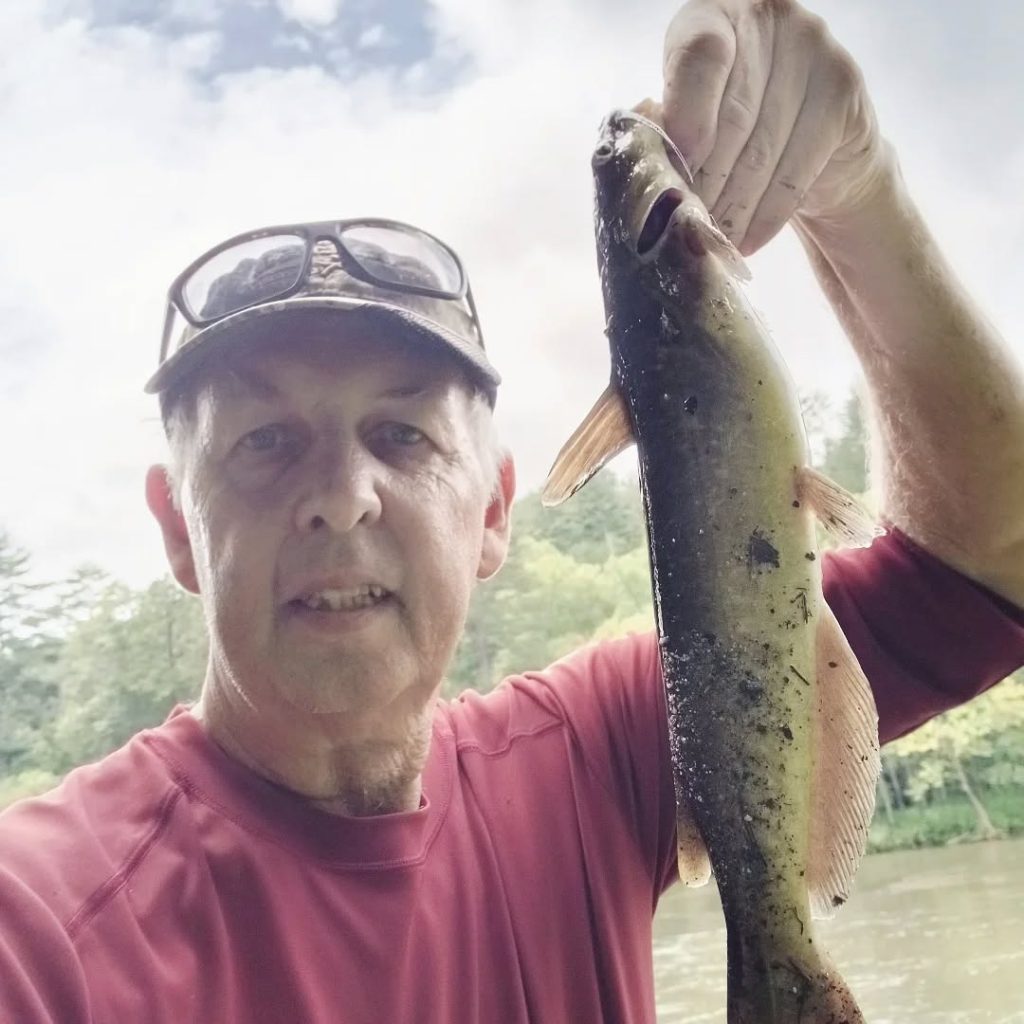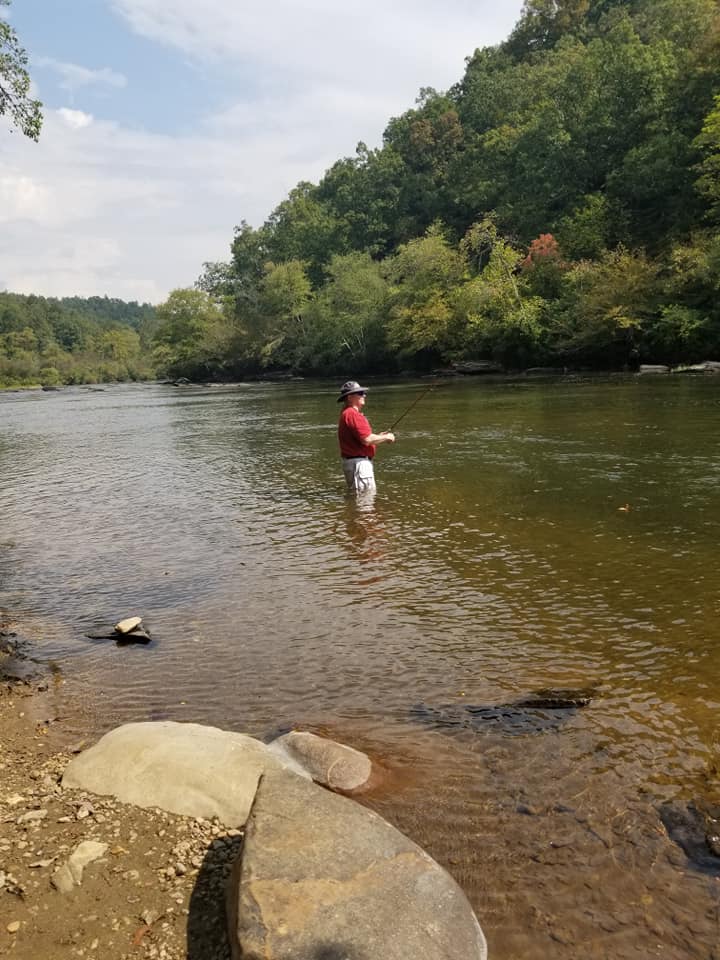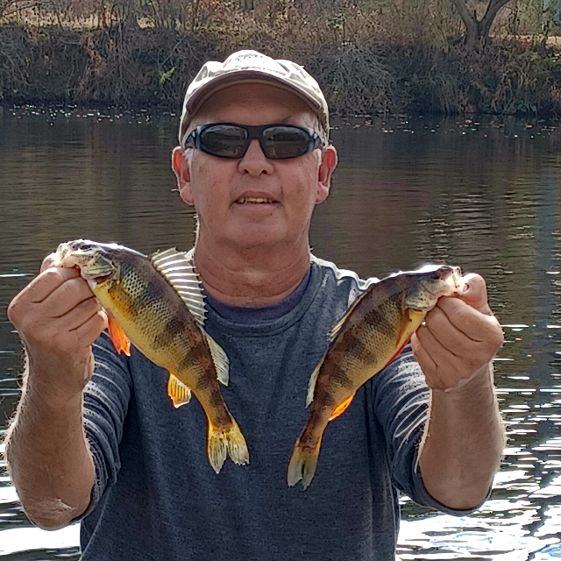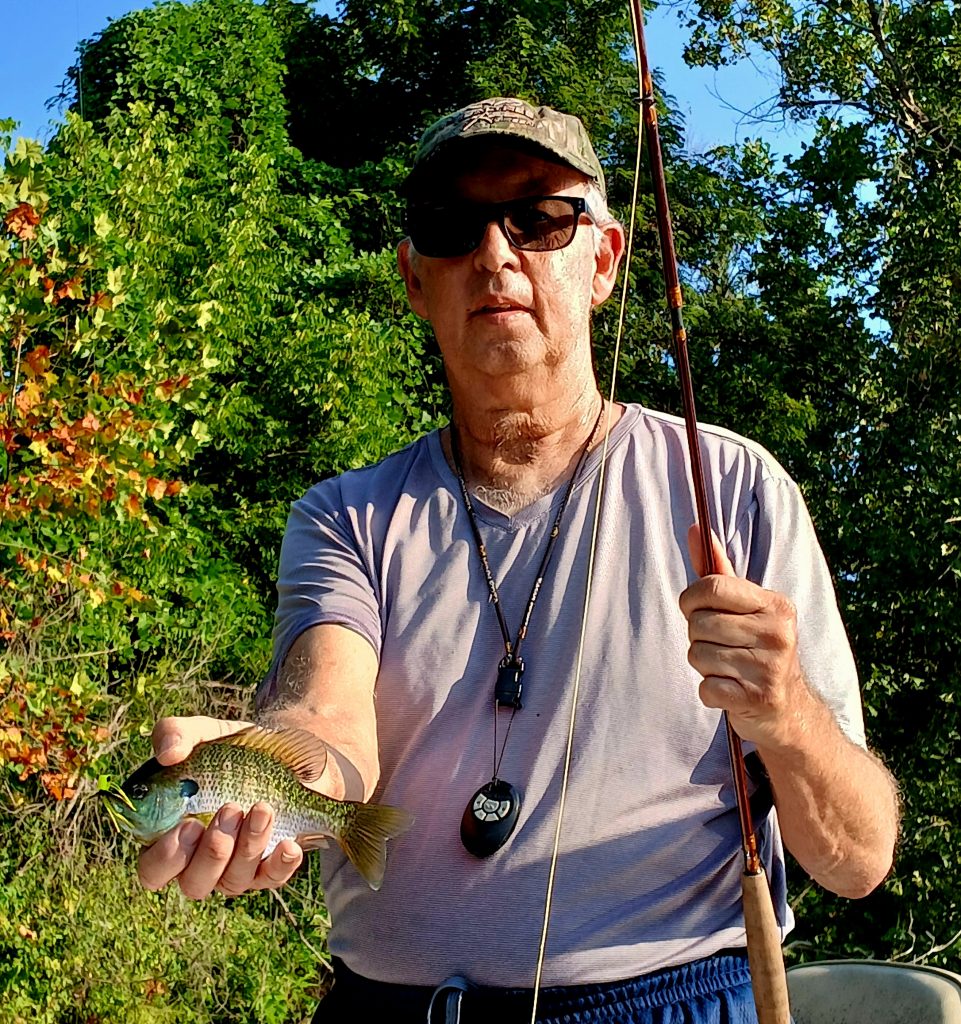Fishing the Little Tennessee River
In this article I will thoroughly cover fishing the Little Tennessee River in Franklin, North Carolina. The Little Tennessee River, known locally as “The LT” is a beautiful little river and has perfect habitat for smallmouth bass and other species. In this article, I will cover the Little Tennessee River where it flows in and through Franklin, North Carolina.
Read my comprehensive article on fishing in Franklin North Carolina
The Little Tennessee River begins its life in North Georgia and flows through the very western part of North Carolina. It eventually empties into the Tennessee River, after creating huge Fontana Lake. That is a whole separate fishery and worthy of another article.
It is easy to make the argument that smallmouth bass are the primary species sought by anglers fishing the Little Tennessee River in the Franklin, North Carolina area, and for good reason! It is a very solid fishery, known more for numbers than for trophies. However, anglers can also catch largemouth bass, spotted bass, rock bass (also known as goggle-eye or redeye bass), rainbow and brown trout, carp, redhorse shiners, and very good numbers of panfish including sunfish, bluegill, and crappie. Other species include catfish, hybrid and striped bass in the lower reaches, and even the occasional walleye.
Call Capt Jim at (941) 371-1390 or e-mail captjimklopfer@gmail.com
Fishing the Little Tennessee River
I am going to break down the Little Tennessee River into three sections; the upper section, Lake Emory, and the lower section. In the upper reaches, the Little Tennessee River is not much more than a stream with limited access. Lake Emory is a river style lake that is long and narrow and usually has a little current. The lower section is free-flowing and is the quintessential smallmouth bass stream and this is the section that most anglers fish.
Guided fishing on the Little Tennessee River
I offer a variety of guided fishing trips on the Little Tennessee River. Anglers desiring the fish Lake Emory can choose to fly fish or spin fish, Panfish are the primary quarry and this is a great choice for kids and inexperienced anglers, especially in summer when trout fishing is slow. I use my skiff for this and can take 2 to 3 anglers.
When fishing below the dam, anglers can both wade or drift fish. I use a 10 foot 2 person Dave Scadden raft for drift fishing trips. It is small and light enough to get into spots larger rafts can not. The down side is that I can only take one angler. I mostly drift from the dam down to Bryson City Road.
Wading is another option for those choosing a guided fishing trip on the Little Tennessee River. The best time to wade is when the water is low and fairly clear. The area north off of Needmore Rd is best and offers excellent access. I try to limit it to 2 anglers.
Anglers fishing the Little Tennessee River can shop at Fish Tales Outfitters in downtown Franklin. Ernie and his excellent staff will be able to give you up to date conditions on the Little Tennessee River as well as surrounding trout streams. They can also outfit you with whatever lures and flies needed in order to have a successful fishing trip.
If there is one downside to fishing the Little Tennessee River, is that it tends to get muddy easily and takes quite a while to clear up. These sections up river of Franklin go through quite a bit of flatland areas. There are also multiple tributaries. The result is that the water picks up a lot of mud and carries it downstream. Fishing during periods of high, dirty water are not only generally unproductive, it can be downright unsafe. I always suggest waiting until the water level drops down in the water clears up.
Tackle for fishing the Little Tennessee River
I am going to briefly go through the tackle and techniques that I use when fishing the Little Tennessee River in Franklin, North Carolina. For the most part, I use very light spinning tackle. A 6 foot to 6 1/2 foot light or ultralight spinning rod with a 1000 series reel spooled up with 6 pound monofilament line is an excellent all round combo. If the water is very clear, I will even drop down to 4 pound line. 10 pound braided line also works well, especially when the water is stained.
I use artificial lures and flies for most of my fishing on the Little Tennessee River. The exception would be when I am fishing for panfish in Lake Emory and in the slower moving sections of the river. I’m sure that drifting a minnow, hold nightcrawler, or crayfish through the pools would produce smallmouth, however I just prefer using artificial lures and flies.
Best lures for fishing the Little Tennessee River
Lure selection for river fishing does not need to be complicated. There are a handful of proven lures that have produced well for me on the Little Tennessee River. These are Rapala jerk baits in the 08 size, a small top water plug such as the Heddon Tiny Torpedo, the legendary Rebel Wee Craw, in-line spinners such as Mepps and Rooster Tail spinners, small spinner baits including the Johnson Beetle spin, and a variety of soft plastic baits fished on a light jig head.
If I had to pick one lure to fish with in the Little Tennessee River my choice would be a size 08 Rapala X-Rap Extreme Action Slashbait. Olive and white are my top colors. This lure allows anglers to cover a lot of water in search of fish. It is small enough to catch numbers while large enough to entice larger fish. With a pair of treble hooks, the hookup ratio is good.
Fly fishing the Little Tennesse River
Fly fishing on the Little Tennessee River is both productive and enjoyable. As with spin fishing, I don’t get overly complicated with tackle and fly selection. I primarily fish a 4wt outfit, which some anglers would consider a little light. However, most of the fish are modest size and I just accepted if I hook a very large fish and can’t handle it.
A wide variety of flies are productive on the river. I pretty much stick with poppers in white, Clouser Minnow patterns in chartreuse over white and olive over white, along with black and olive woolly buggers. Flies tied on a #4 hook work well for smallmouth, and I’ll drop down to a #8 when targeting panfish.
Fishing the lower portion of the river
I am going to cover the lower section of the Little Tennessee River in Franklin, North Carolina first, since this is the part of the river that attracts the most anglers. It is a gorgeous stream that flows from the dam at Lake Emory to Fontana Lake. I like to break the river up into two sections.
The first section from the dam to the mouth of Tellico Creek is fairly narrow with modest current. It is a perfect river to drift! Anglers can easily drift down the middle of the river and hit both banks. There are a few mild rapids, but all are very easily navigated in normal water. Jerk baits, top water plugs, small crank baits, spinner baits, and a 1/8 ounce jig with a curly tail grub are excellent lures for the section. There are portions that are slow enough for anglers can use live bait.
Access to this portion of the river is a bit limited, though better than it used to be. Anglers with canoes, kayaks, and small rafts can put in just below the dam. The next access point is a nice little park right at the 28 bridge a few miles downriver.
Several miles downriver there is a nice little park at Cowee Mound. That is pretty much it until the mouth of Tellico Creek, which is a good distance downriver. As mentioned above, all of these spots are best for small, light craft as most include a small hill, mud, and rocks.
The Little Tennessee River changes in the area around where Tellico Creek and Burningtown Creek enter the river. The river becomes much wider and a bit faster and is very shallow in most places. It is also very accessible off of Needmore Road, which is a very nice hard packed dirt road that parallels the river for many miles. For both of these reasons, this is an excellent section of the Little Tennessee River to wade. Anglers who do prefer to drift will find multiple access points, click this link to view a map on access points for the Little Tennessee River.
Due to the swift, shallow water in the section, anglers must vary their lure selection and techniques just a bit. While soft plastic lures will work, anglers must be prepared to snag the bottom quite often. Even the shallow running jerk baits that I prefer can get hung up quite a bit. A small spinner bait works well as it tends to be more weedless than other lures. Top water plugs are obviously a good option. Jigs and other deeper running lures can be used in the slower, deeper pools.
There is not a ton of holding water in this section. However, the slack water behind any rock, ledge, or boulder is liable to hold a fish. Another added benefit of this section of the Little Tennessee River is that this is where anglers are much more likely to encounter trout as well. This is probably due to both burning town Creek and Tellico Creek emptying into the Little Tennessee River. The river is not stocked, however these local creeks are and trout will naturally find their way into the larger river.
Fishing Lake Emory
Lake Emory sits right in the middle of Franklin, North Carolina. In my opinion, it is a much overlooked fishing spot. Anglers tend to drive an hour to the more glamorous locations but the Little Tennessee River in this section can offer some very good fishing when conditions are right. There is a nice paved boat ramp right in the middle of town and access points for kayaks and other small craft in a couple locations as well. The Tassee shelter off of the Greenway is an excellent launching spot for canoes and kayaks.
Lake Emory is a very easy lake to fish. For the most part, it just consists of casting to shoreline structure, with fallen trees being the primary cover. The river almost always has some current, often slow and easy. The tactic that I primarily use is to go up river of the area I want to fish that let the current drift me down while using the trolling motor to correct my position. This is a very efficient way to fish and the pace of the current is usually perfect. Anglers who venture a ways up stream will find the current speed increase as they do so. They will also find more smallmouth bass and rock bass the further up stream they go.
Lake Emory is full of panfish! Sunfish are plentiful, along with bluegill and the occasional crappie. Decent sized yellow perch are often caught as well. I mostly fish ultralight spinning and light fly tackle for these feisty little game fish when I am looking for action and a few fish to fry up. Small bass are often caught doing this as well. A 1/16 ounce chartreuse curly tail jig is tough to beat. Live wigglers work great when the water has a little color to it. There are some larger bass in the lake as well. Anglers targeting those fish will need to bump up the tackle and lure selection to what they would normally use for largemouth bass in other lakes. A 5” Senko or other plastic worm is tough to beat.
Little Tennessee River upstream of Franklin
The Little Tennessee River upstream of Lake Emory gets almost no fishing pressure. A good reason for this is the very limited access to it. For the most part, the launch point for canoes and kayaks at Prentice Bridge is really the only public spot. It is a fairly long drift from their to the next access point which would be the Tassee Shelter. The river is quite narrow in this section, really more like a stream. However, anglers adventurous enough to do this long float when water conditions are right will find a lot of action on rock bass, panfish, and smaller smallmouth bass.
In conclusion, I hope this article on fishing the little Tennessee River in Franklin, North Carolina will help anglers understand the fishery and give this excellent and overlooked spot a try!
